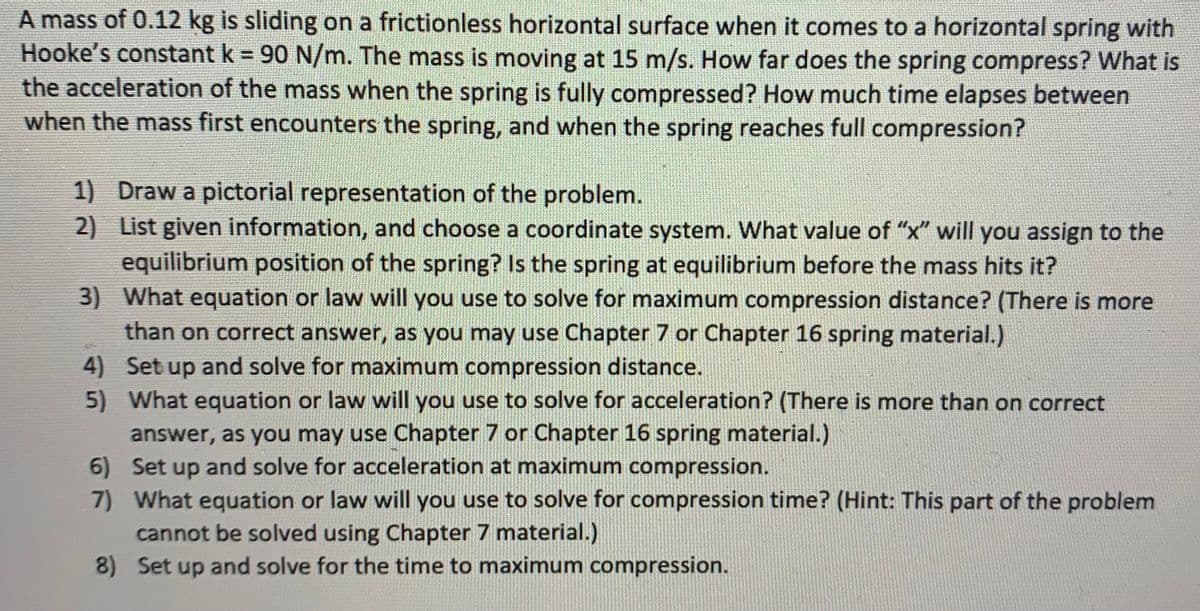A mass of 0.12 kg is sliding on a frictionless horizontal surface when it comes to a horizontal spring with Hooke's constant k = 90 N/m. The mass is moving at 15 m/s. How far does the spring compress? What is the acceleration of the mass when the spring is fully compressed? How much time elapses between when the mass first encounters the spring, and when the spring reaches full compression? 1) Draw a pictorial representation of the problem. 2) List given information, and choose a coordinate system. What value of "x" will you assign to the equilibrium position of the spring? Is the spring at equilibrium before the mass hits it? 3) What equation or law will you use to solve for maximum compression distance? (There is more than on correct answer, as you may use Chapter 7 or Chapter 16 spring material.) 4) Set up and solve for maximum compression distance. 5) What equation or law will you use to solve for acceleration? (There is more than on correct answer, as you may use Chapter 7 or Chapter 16 spring material.) 6) Set up and solve for acceleration at maximum compression. 7) What equation or law will you use to solve for compression time? (Hint: This part of the problem cannot be solved using Chapter 7 material.) 8) Set up and solve for the time to maximum compression.
Simple harmonic motion
Simple harmonic motion is a type of periodic motion in which an object undergoes oscillatory motion. The restoring force exerted by the object exhibiting SHM is proportional to the displacement from the equilibrium position. The force is directed towards the mean position. We see many examples of SHM around us, common ones are the motion of a pendulum, spring and vibration of strings in musical instruments, and so on.
Simple Pendulum
A simple pendulum comprises a heavy mass (called bob) attached to one end of the weightless and flexible string.
Oscillation
In Physics, oscillation means a repetitive motion that happens in a variation with respect to time. There is usually a central value, where the object would be at rest. Additionally, there are two or more positions between which the repetitive motion takes place. In mathematics, oscillations can also be described as vibrations. The most common examples of oscillation that is seen in daily lives include the alternating current (AC) or the motion of a moving pendulum.

Trending now
This is a popular solution!
Step by step
Solved in 2 steps with 2 images









